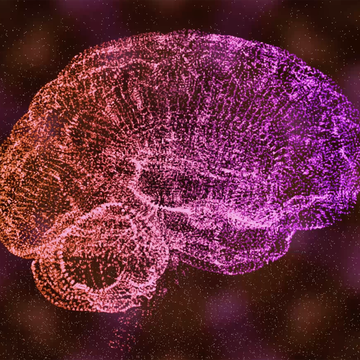I’m afraid of more things than I should be. I’m afraid of walking on ice, riding my bike downhill, eating sweet and savory foods in the same bite—pizza with pineapple… terrifying. I’m afraid the UPS guy will catch me without a bra on when he delivers my Amazon packages. I’m afraid of astronomy—the vastness of the universe and all the math it takes to figure it out leaves me anxious and confused, wanting to kick inanimate objects. I’m afraid of having to unexpectedly talk to my neighbors. Please don’t just stop by to say hello. I will need a cold compress to recover.
I used to think that anxiety just came naturally to me. You know how some people are born with amazing voices or athletic prowess? Well, I was born to worry. Early childhood trauma around neglect and abandonment allowed my abilities to flourish. And because I was raised by anxious people, my talents were further developed. On any given day, I could provide a litany of reasons why I was always moments away from being abducted. So, when at 31 years old, and I got diagnosed with a rare, stage IV cancer with no cure and no treatment, my fear and anxiety spread like a venereal disease.
Anne Lamott basically summed up my experience when she wrote, “My mind is a bad neighborhood that I try not to go into alone.”
One minute I was centered, calm, and present. Feeling my butt on the chair. Paying attention to my breathing. Noticing my peaceful surroundings—a cardinal at my birdfeeder. The next minute I’d be planning the guest list for my funeral.
What kind of food would be served? Should there be a DJ? No. Not classy enough. Who should get my good jewelry? My mom and goddaughter. Will Brian remember to feed our dogs? Brian is so lonely now. I love Brian. Maybe he should start dating again? But not someone younger and prettier than me. Oh my God, Brian is dating a hot 20-year-old! I hate Brian.
If I had enough awareness to recognize what my brain was actually doing and why, I’d meet my fear and anxiety with compassion (and a hearty chuckle). But more often than not, my negative fantasies would hold my brain hostage, and the next time Brian asked me if I knew where his glasses were, I’d tell him to consult his child bride.
If you’re anything like me, you may simply want to weed whack the crap out of these strong emotions and just be done with them. In reality, tending to them lovingly, with gentle pruning and better habits, is a far more productive and sustainable path, helping you rewire your brain, set yourself free from your unconscious (or semiconscious) addiction to fear and worry, and enjoy a bigger, fuller life. The energy driving emotions like grief and anxiety needs to go somewhere. It needs to be discharged somehow. (And if you’ve ever had a full-blown meltdown over something ridiculous, like a ketchup stain on your favorite sweatshirt, you know what I’m talking about.) Here are some healthy ways to channel it.
Validate what you’re feeling: Remember, feelings aren’t good or bad; they’re information. They help us know how to respond in different situations. Your feelings have a right to take up space. There’s nothing wrong with them or with you. They deserve to be seen without having to be fixed, justified, or controlled. They’re okay, and so are you.
Investigate the facts: Remember, both fear and anxiety are very imaginative. The stories they tell can be over-the-top. Be a detective and look for the evidence. For example, if Neighbor Nan didn’t invite you to her party, could there be a valid reason that has nothing to do with her suddenly hating you? More often than not, you won’t find any shred of evidence to back up your anxiety- and fear-driven stories. And if you do find that there was some truth, it’s probably nowhere close to as dire as what your imagination would have you believe.
Here’s an example of how this has played out in my life: Perhaps my tumors grew a little between scans, but did they multiply like horny bunnies? No. Have they ever? No. So what’s the chance they will this time? The facts after 20 years of living with cancer are pretty consistent. But in times of high stress, my imagination still needs to be reminded.
Questions for you to ponder as you investigate the facts: Do you know for certain that the scary movie you’re playing in your mind will happen? Is there evidence to the contrary? Or is there someone you can call to verify facts? Could variables such as timing be in play? Or perhaps there is a more benign reason for what you’ve observed (for example, the tumor in my arm that turned out to not be cancerous)? And if the worst-case scenario did happen, could you handle it? How have you been able to handle difficult situations successfully in the past?
Bonus tip: Give the scary movie you’re playing in your mind a funny or absurd title.
- Woman on the Verge of a Nervous Breakdown Winds Up Fine—and Accidentally Loving Life
- Oops, I Farted in Yoga in Front of My New Partner and Now My Life Is Over
- I’m Gonna Fall Flat on My Face and Become a Social Outcast: A Musical
Humor disarms us. It breaks the tension, creating some distance between us and the unhelpful thoughts that threaten to consume us. It can even make us smile, God forbid.
Get out of your head and into your body: Research shows that it’s hard to solve the problems of the mind with the mind. When we’re flooded with fear and anxiety, it’s really challenging to mentally strong-arm ourselves back to calm. We need help changing our mental channel so we can choose a better path. No shame in that game.
Have you watched a dog go into brain rot—incessantly barking or licking a hot spot? Changing that behavior requires changing their physical state, perhaps getting the dog to play ball, go for a walk, or otherwise redirect their energy. Sure, you can shout “No, Todd!” but that doesn’t always work. And even if it does, yelling only makes dogs feel more anxious. Similarly, when we’re anxious, shouting “No!” at ourselves often makes things worse.
This is where movement comes in. Changing your physical state helps change your mental state, too. According to Dr. Wendy Suzuki, professor of neural science and psychology at New York University, even just 10 minutes of movement per day (walking, aerobics, dance—anything you love that gets your heart pumping) significantly reduces stress and anxiety. Moving your muscles also releases what she refers to as a “bubble bath” of feel-good neurochemicals like serotonin, dopamine, and noradrenaline.
It takes a lot of emotional bravery to walk this path, my friend. And though it may not feel like it now, this work will pay off in ways you can’t imagine.
With that in mind, try to become more aware of the moments when you feel scared and anxious (if you’re like me, that might be once or twice an hour). Instead of allowing those feelings to fester and spread, give yourself the care you deserve.
And when the going gets tough and ornery, just keep tapping into your emotional bravery—your willingness to look at what’s going on with courage, curiosity, and compassion.
Remember, the more we’re willing to know about ourselves, the less weird (wrong or bad) we feel. Over time we come to understand the wisdom of counterculture icon and peace activist Wavy Gravy: “We’re all bozos on the bus, so might as well sit back and enjoy the ride.”
Adapted from I’m Not a Mourning Person: Braving Loss, Grief, and the Big Messy Emotions That Happen When Life Falls Apart, by Kris Carr © September 19, 2023.














